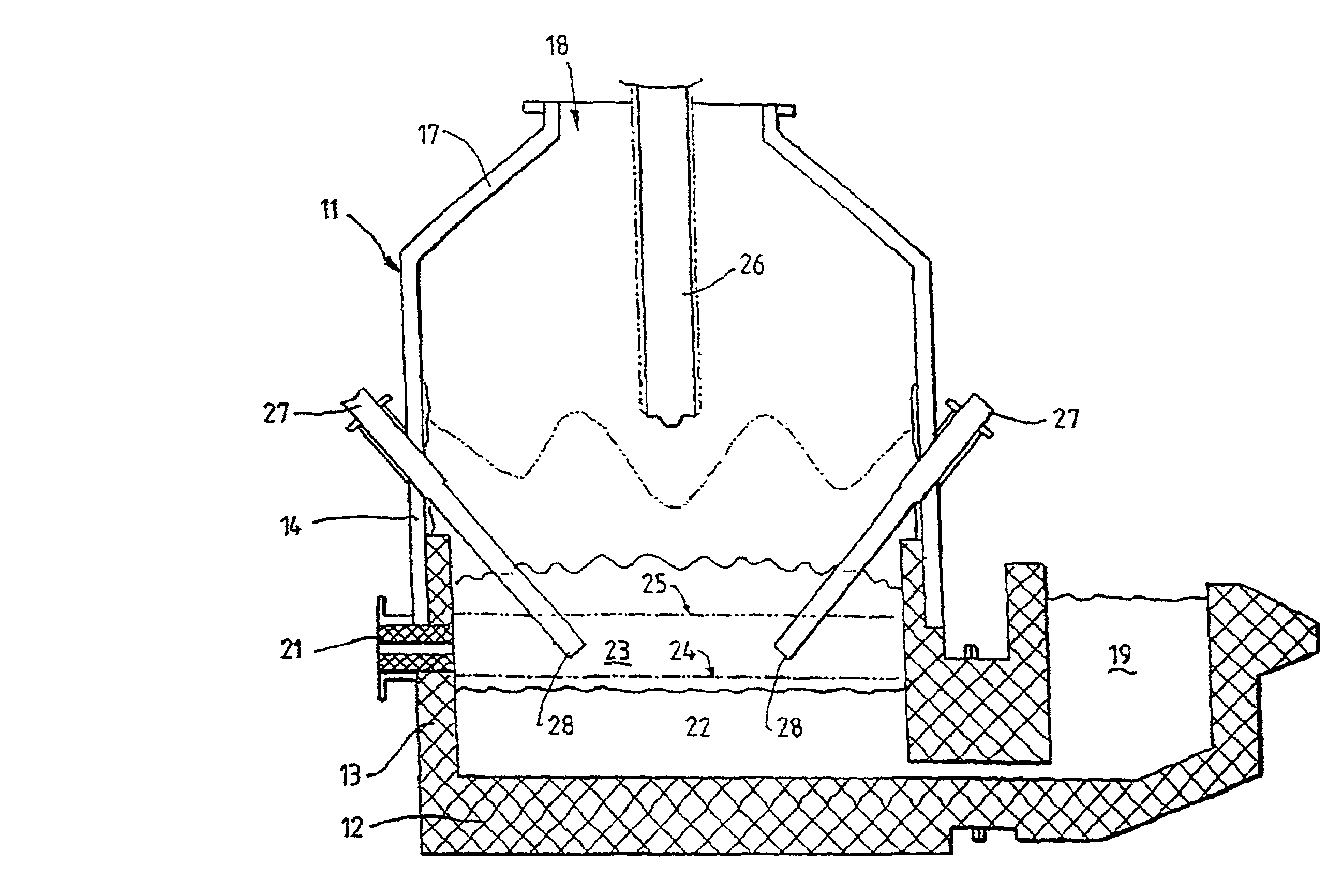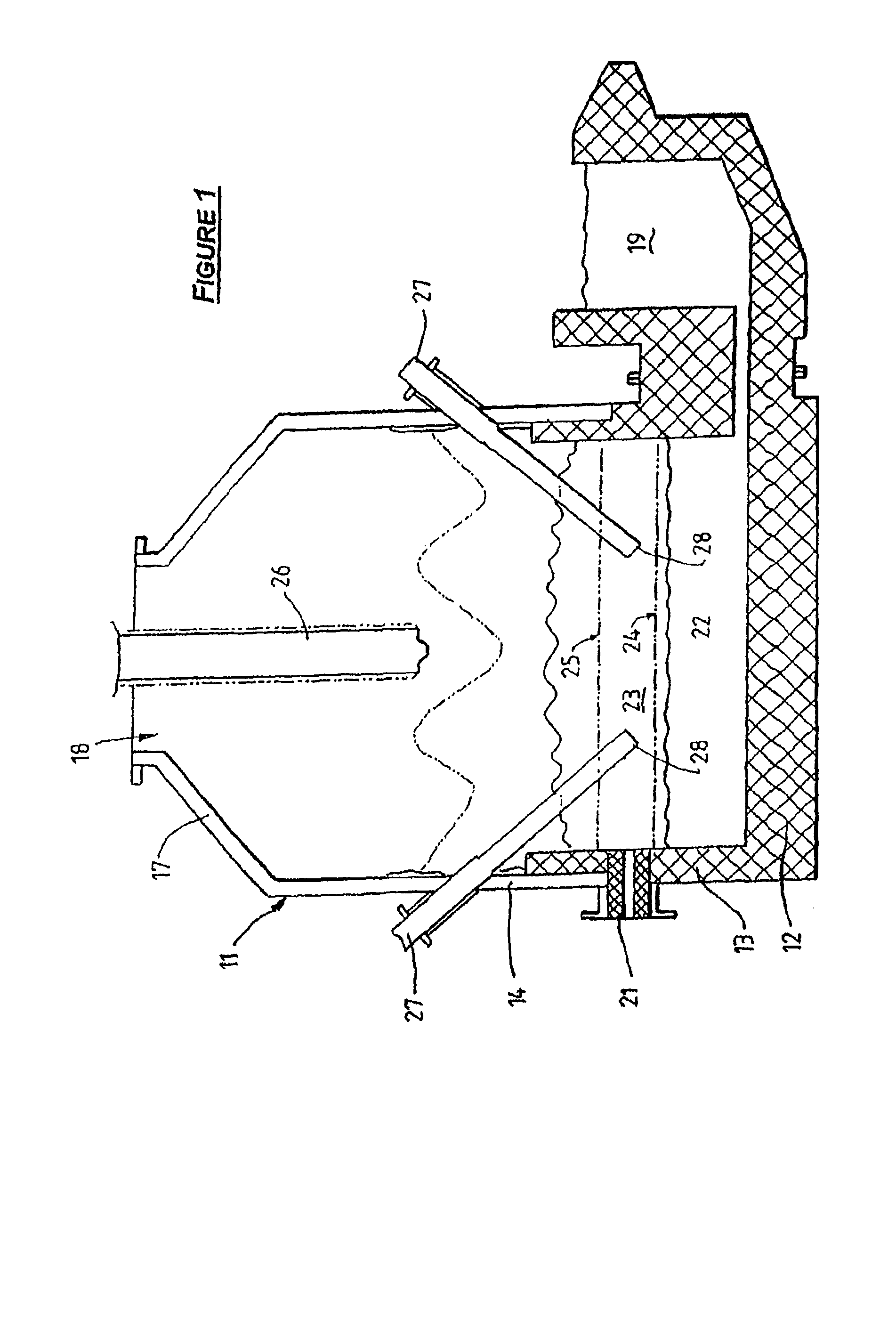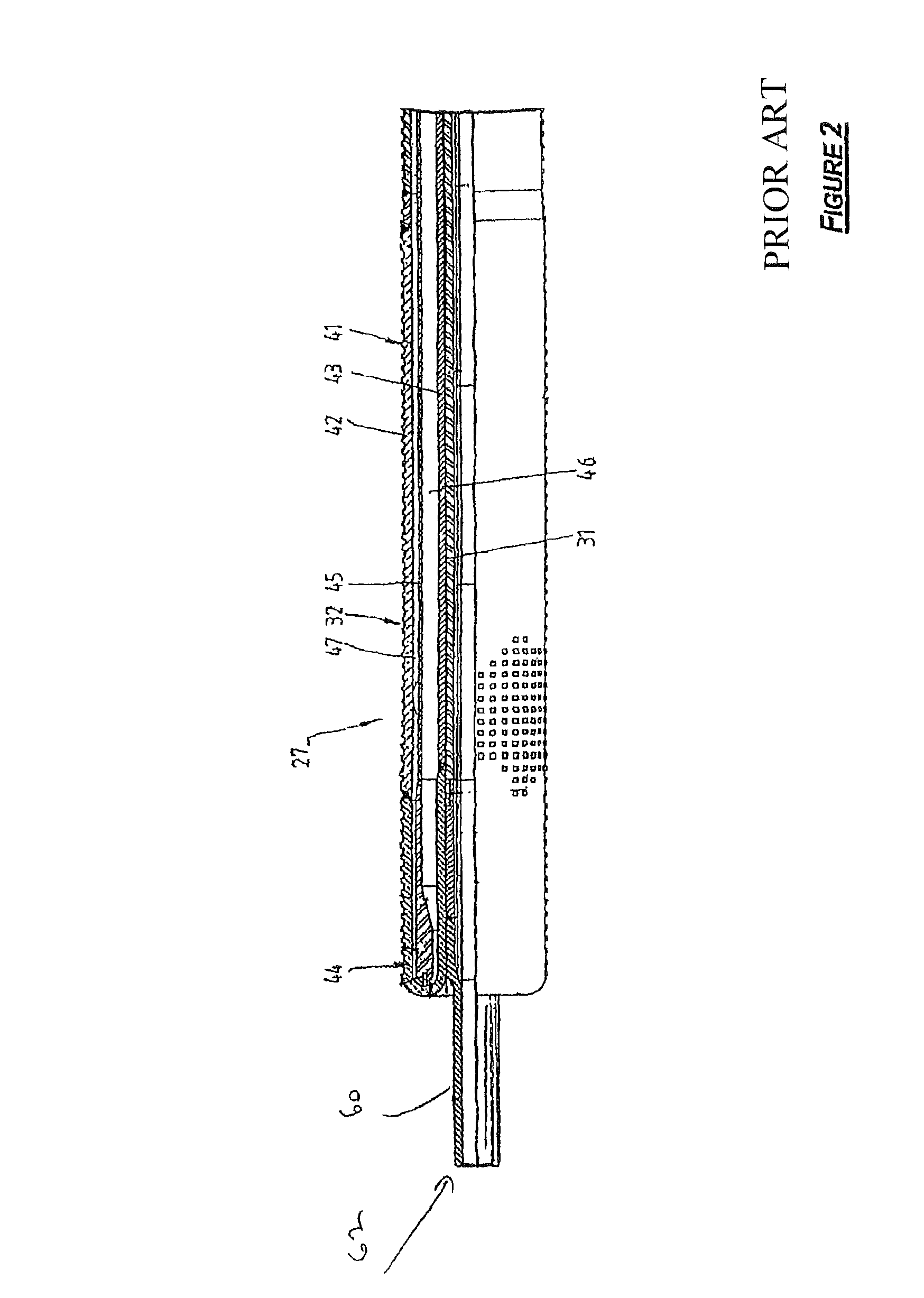Lance for injecting solid material into a vessel
a solid material and vessel technology, applied in the direction of blast furnace components, manufacturing converters, blast furnaces, etc., can solve the problems of premature failure of the weld connecting the adjacent sections of a wear resistant material, failure of the lance, etc., to minimise the risk of the lance failure, the weld is difficult to reliably weld, and the requirements are quite separate
- Summary
- Abstract
- Description
- Claims
- Application Information
AI Technical Summary
Benefits of technology
Problems solved by technology
Method used
Image
Examples
Embodiment Construction
[0053]FIG. 1 shows a direct smelting vessel 11 that is suitable particularly for carrying out the HIsmelt process as described in International patent application PCT / AU96 / 00197. The following description is in the context of smelting iron ore fines to produce molten iron in accordance with the HIsmelt process. It will be appreciated that the present invention is applicable to smelting any metalliferous material, including ores, partly reduced ores, and metal-containing waste streams. It will also be appreciated that the ores can be in the form of iron ore fines. It will also be appreciated that the present invention is not confined to producing iron and extends to smelting other metals (including alloys).
[0054]The vessel 11 has a hearth that includes a base 12 and sides 13 formed from refractory bricks, side walls 14, which form a generally cylindrical barrel extending upwardly from the sides 13 of the hearth, and a roof 17. Water-cooled panels (not shown) are provided for transfer...
PUM
| Property | Measurement | Unit |
|---|---|---|
| thick | aaaaa | aaaaa |
| thickness | aaaaa | aaaaa |
| thickness | aaaaa | aaaaa |
Abstract
Description
Claims
Application Information
 Login to View More
Login to View More - R&D
- Intellectual Property
- Life Sciences
- Materials
- Tech Scout
- Unparalleled Data Quality
- Higher Quality Content
- 60% Fewer Hallucinations
Browse by: Latest US Patents, China's latest patents, Technical Efficacy Thesaurus, Application Domain, Technology Topic, Popular Technical Reports.
© 2025 PatSnap. All rights reserved.Legal|Privacy policy|Modern Slavery Act Transparency Statement|Sitemap|About US| Contact US: help@patsnap.com



